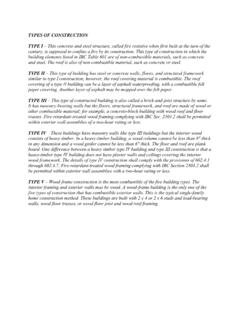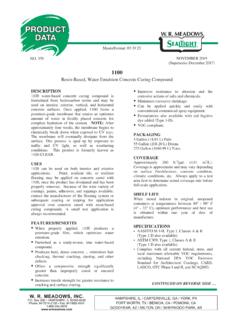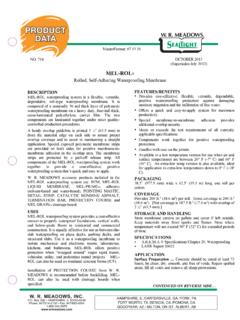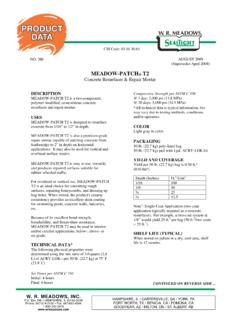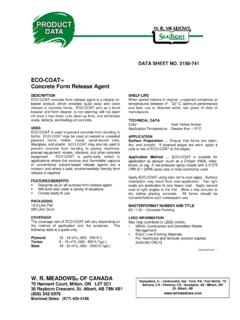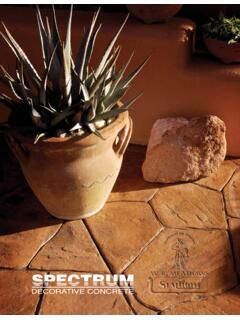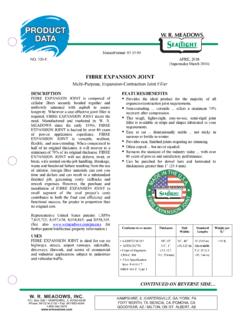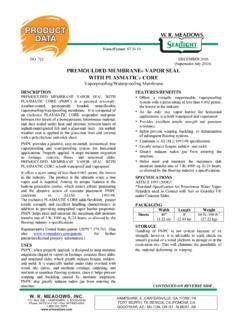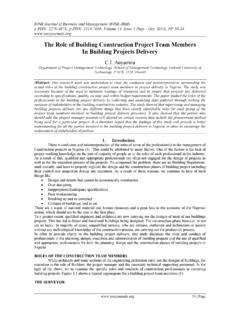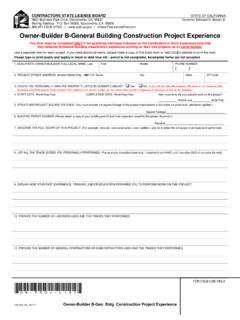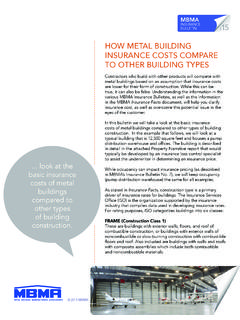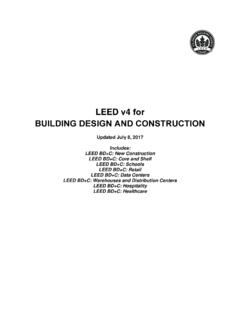Transcription of TYPES OF CONSTRUCTION TYPE I TYPE II TYPE IV TYPE V
1 TYPES OF CONSTRUCTION TYPE I This concrete and steel structure, called fire resistive when first built at the turn of the century, is supposed to confine a fire by its CONSTRUCTION . This type of CONSTRUCTION in which the building elements listed in IBC Table 601 are of non-combustible materials, such as concrete and steel. The roof is also of non-combustible material, such as concrete or steel. TYPE II This type of building has steel or concrete walls, floors, and structural framework similar to type I CONSTRUCTION ; however, the roof covering material is combustible. The roof covering of a type II building can be a layer of asphalt waterproofing, with a combustible felt paper covering. Another layer of asphalt may be mopped over the felt paper. TYPE III This type of constructed building is also called a brick-and-joist structure by some. It has masonry-bearing walls but the floors, structural framework, and roof are made of wood or other combustible material; for example, a concrete-block building with wood roof and floor trusses.
2 Fire-retardant-treated wood framing complying with IBC Sec. shall be permitted within exterior wall assemblies of a two-hour rating or less. TYPE IV These buildings have masonry walls like type III buildings but the interior wood consists of heavy timber. In a heavy-timber building , a wood column cannot be less than 8 thick in any dimension and a wood girder cannot be less than 6 thick. The floor and roof are plank board. One difference between a heavy timber type IV building and type III CONSTRUCTION is that a heavy-timber type IV building does not have plaster walls and ceilings covering the interior wood framework. The details of type IV CONSTRUCTION shall comply with the provisions of through Fire-retardant-treated wood framing complying with IBC Section shall be permitted within exterior wall assemblies with a two-hour rating or less. TYPE V Wood-frame CONSTRUCTION is the most combustible of the five building TYPES .
3 The interior framing and exterior walls may be wood. A wood-frame building is the only one of the five TYPES of CONSTRUCTION that has combustible exterior walls. This is the typical single-family home CONSTRUCTION method. These buildings are built with 2 x 4 or 2 x 6 studs and load-bearing walls, wood floor trusses, or wood floor joist and wood roof framing.
